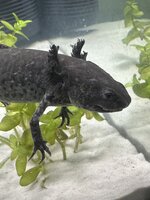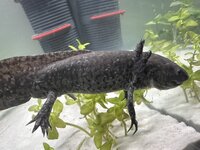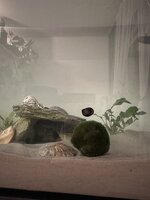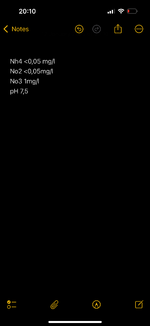PDora
New member
Hi! I’m a beginner of growing an axolotl as a pet. We have him just for 3 months, and just a week ago he started to refuse to eat (feeding him earthworms). I noticed some marks on him and I’m afraid that it is some kind of infection or disease… Please help, because it’s stressing me out..
P.s. water change was done two days ago (50%) and I tasted the water (tubes and liquid drops), they were normal.
P.s. water change was done two days ago (50%) and I tasted the water (tubes and liquid drops), they were normal.




